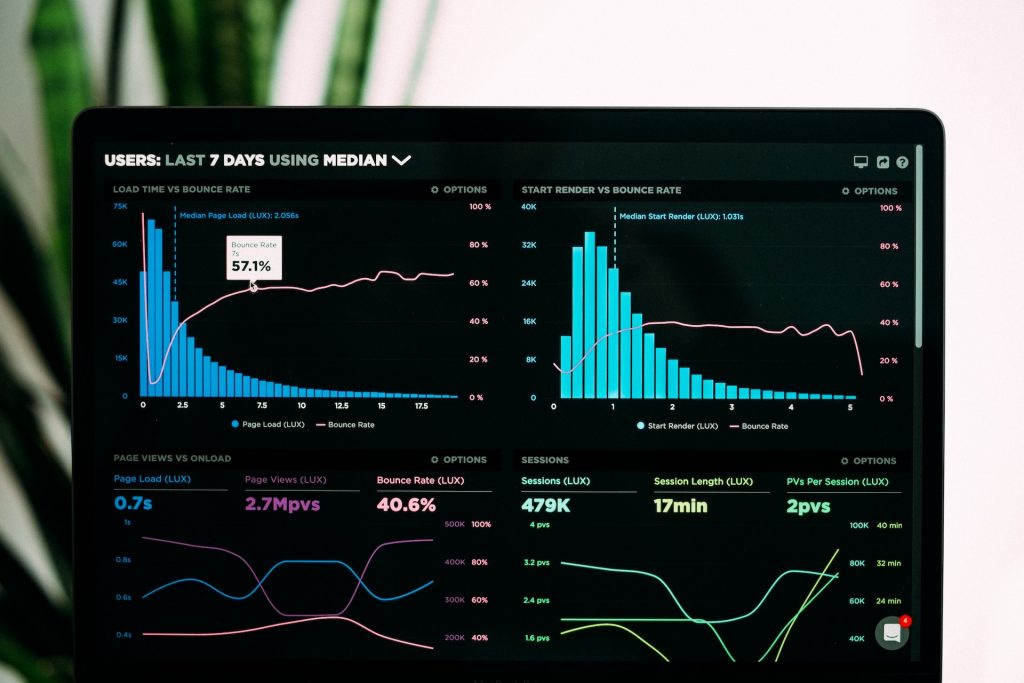Exploring the Differences: Data Science vs Data Analytics

Data Science vs Data Analytics… what’s the difference?
Great question! Data Science and Data Analytics are two related but distinctly different fields that are concerned with processing and analyzing large volumes of data to extract insights to help organizations make better decisions.
Data Science is more concerned with the creation of algorithms and predictive models, while Data Analytics focuses more on generating insights and communicating them to stakeholders. Data Scientists are expected to have strong skills in programming and computer science, while Data Analysts require a strong background in statistics and data analysis.
The field of data science sets the foundational data systems and processes for a business to collect data. They go through the processes of data wrangling and programming to hypothesize the best way of running and collecting data. Data science builds, collects, and organizes datasets and tests which processes are most effective.
Data analytics uses a process called data mining to identify key information within datasets. These results will determine which data processes and systems worked, as well as give the business important information they need to understand the successes and shortcomings within their business. This will help the business identify consumer trends, answer questions from its audience, and reinforce what is working while taking out what isn’t. These results will help businesses make data-based decisions moving forward.
Key Differences Between Data Science and Data Analytics
Data Science and Data Analytics are two terms that are often used interchangeably, but they refer to different fields of study. While both fields deal with processing, analyzing, and interpreting data, there are significant differences between the two in terms of scope, methods, and goals.
Focus and Objectives
The focus and objectives of Data Science and Data Analytics are different. Data Science is a broader field that focuses on developing models and algorithms, while Data Analytics is more focused on using data sets to provide insights that can be used to make better decisions.
Data science sets the groundwork for analyses by data wrangling, which organizes all data into sets. It also uses data modeling to run data through different models for data collection purposes. Data science also writes programs and algorithms that can be used to analyze data more efficiently. Improving your data science skill set will familiarize you with data-based decision-making skills that will help you interpret and visualize data sets.
However, data analytics does require that you hone your analytical skills and technical skills. Proper data analysis demands critical thinking and problem-solving to interpret the data in a way that improves insights for the business as a whole. Data analysts collect and filter data to see which data gives them information to see what aligns with the goal of what is being measured and what needs to be tested. You also need quality communication skills to relay these insights and solutions to your team.
Both fields play a crucial role in today’s data-driven world, and organizations can benefit greatly by leveraging their unique strengths and capabilities.
Skillsets Required
Data Science requires a strong foundation in computer science, mathematics, and statistics. Data scientists should have a deep understanding of algorithms, data structures, and programming languages like Python or R.
Some specific skills required for Data Science include:
- Programming skills: proficiency in programming languages such as Python, R, or Java.
- Statistics: knowledge of probability theory, statistical inference, and regression analysis.
- Machine learning: knowledge of machine learning techniques such as supervised and unsupervised learning, decision trees, and neural networks.
- Data visualization: proficiency in data visualization tools such as Tableau, Matplotlib, or D3. This will help you clearly communicate data findings and ideas to guide the next steps.
Data Analytics requires a more specialized skill set. Data analysts should be proficient in statistical analysis and data visualization, be familiar with statistical software such as SPSS or SAS, and should be comfortable working with large datasets using SQL or Excel.

Some specific skills required for Data Analytics include:
- Statistical analysis: proficiency in statistical software such as SPSS or SAS to understand machine learning algorithms.
- Data visualization: proficiency in data visualization tools such as Tableau, Power BI, or Excel to showcase data dashboards with the use of charts and graphs.
- SQL: the ability to work with large datasets using SQL.
- Business acumen: the ability to understand business requirements and translate data insights into actionable recommendations that are guided by the data.
- Communication: the ability to communicate insights effectively to non-technical stakeholders, and communicate with your team about how to move forward based on analytics reports.
Techniques and Methods Used
Data Science uses advanced techniques such as machine learning, big data, deep learning, and natural language processing. They also use statistical models and methods to develop predictive models and algorithms that work with large datasets. Data Science organizes unstructured data, which can be graphed to show relationships among raw data that will help guide the next business decisions.
In contrast to Data Science, Data Analytics relies heavily on statistical techniques such as descriptive statistics and regression analysis, and data visualization techniques to identify patterns and communicate insights to decision-makers. Once data is collected, it must be cleaned by removing errors, filling in data gaps, or restructuring the data.
Finally, the data is ready to be analyzed using an analysis method:
- Descriptive analytics describes something that has already happened.
- Diagnostic analysis is used to explain why something happened the way it did.
- Prescriptive Analysis is used to pinpoint what actions or methods should be implemented to reach future goals and objectives.
- Predictive analytics is used for forecasting results based on previous data points and past trends.
This entire process of collecting and analyzing data and using findings to make decisions is known as statistical analysis. Applying this process within a business is known as business analytics. Most businesses use business intelligence software to collect data and present it in the form of graphs, charts, dashboards, or reports. A business analyst then helps determine what the data means and what steps the business needs to take next in order to reach its goals as efficiently as possible.
Applications and Industries
Data Science is typically used for more complex tasks and is more focused on developing predictive models and automating decision-making processes. Data Analytics, on the other hand, is used for more routine tasks and is more focused on statistical models for identifying patterns in data and measuring performance.
Understanding Data Science
Working as a data scientist often involves working with large and complex datasets, so knowledge of statistical techniques such as regression analysis, hypothesis testing, and clustering is essential.
Data Science is a rapidly growing field, and there are many career opportunities available for individuals with the right skills and experience. Some career opportunities include:
Data Scientist
Data Scientists are responsible for developing and implementing predictive models and algorithms to extract insights from data. They work with large datasets and use statistical and machine-learning techniques to identify patterns and trends. A data science career consists of processing and verifying data, using machine-learning techniques and algorithms to extract information, identifying trends, and making predictions based on results. A data scientist salary averages around $106, 115.
Machine Learning Engineer
Machine Learning Engineers develop and deploy machine learning models to automate decision-making processes, as well as facilitate algorithms and conduct experiments. They work with large datasets and use tools such as TensorFlow and PyTorch to build and train models. They use this data to improve current information technology systems. To become a machine learning engineer, you must hold a bachelor’s degree in computer science or a related field, then select an entry-level position such as software engineering. The annual base salary for a machine learning engineer is around $125,000.
Business Intelligence Analyst
Business Intelligence Analysts are responsible for using data to inform business decisions. They work with stakeholders to identify key performance indicators and develop dashboards and reports of data sets to communicate insights. They use frameworks such as Hadoop to process data sets, and most business intelligence analysts are SAS certified specialists. The average salary starts at $87,000.
Data Engineer
Data Engineers are responsible for building and maintaining the infrastructure required to support data-driven applications. They work with large datasets and use tools such as Hadoop and Spark to manage data processing and storage. Data engineers have an average annual salary of $110,000.
AI Researcher
AI Researchers develop and innovate new technologies in the field of artificial intelligence. They use cutting-edge techniques such as deep learning and natural language processing to develop new intelligent systems and improve current information technology systems. To be an AI researcher, you must hold a computer science degree and can expect an average salary starting around $112,000.

Understanding Data Analytics
Data Analysts use statistical techniques such as regression analysis, hypothesis testing, and clustering to identify patterns and relationships in data. Data Analytics is a rapidly growing field, and there are many career opportunities available for individuals with the right skills and experience.
Data Analyst
A data analyst job requires you to analyze data to identify trends, patterns, and insights. Data analysts use statistical analysis and visualization tools to communicate their findings to stakeholders and make data-driven recommendations. Data Analyst roles earn an average of $84,000 annually.
Marketing Analyst
Marketing Analysts use data to inform marketing strategies and campaigns. They analyze customer data and behavior to identify trends and insights and make data-driven recommendations for marketing campaigns. Marketing analysts earn an average salary of $60,000.
Financial Analyst
Financial Analysts use data to analyze financial performance and make recommendations for investment decisions. They analyze financial data and market trends to identify opportunities and risks and use tools like Power BI to present the results to stakeholders in an easily digestible way. The average base salary for financial analysts is $47,000.
Operations Analyst
Operations Analysts use data to optimize business processes and improve efficiency. They analyze operational data to identify bottlenecks and areas for improvement. You typically need a bachelor’s degree in computer science or a related field to be an operations analyst. However, you have the option to enroll in an operations analyst bootcamp to earn a certification. The average annual salary is $64,658.
Data Visualization Specialist
Data Visualization Specialists are responsible for creating visual representations of data to communicate insights and findings. They use visualization tools such as Tableau and Power BI to create charts, graphs, and dashboards that make complex data more accessible and understandable. The average salary for a data visualization specialist is $92,477.

Making the Right Choice for Your Goals
Data Science is an in-demand career path, as is Data Analytics. Both require at least a Bachelor’s degree. While an advanced degree may not be required for you to pursue one of these career avenues, a Master’s degree can help you earn more income in either of these fields.
There are pros and cons to a new career path, but these fields have shown how much opportunity is out there, and that the demand is not slowing down. Your choice may depend on which job description sounds right for you and which skill sets you want to sharpen.
If you are ready to advance your career, we can make your decision easier.

